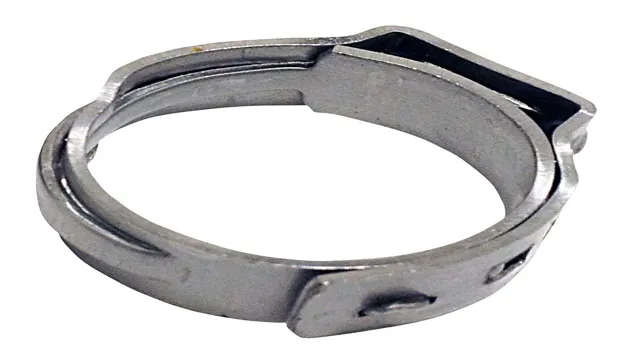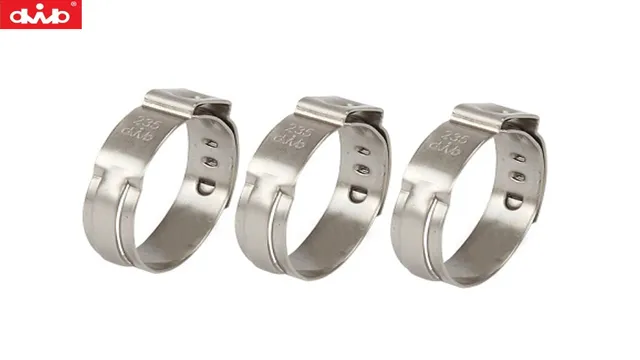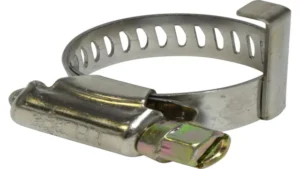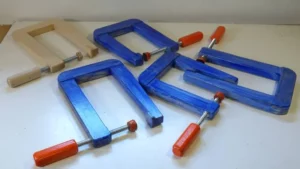Pinch clamps are essential tools for any DIY enthusiast or professional. Whether you’re a plumber, electrician, or even a home baker, these clamps make it easy to secure pipes, wires, and hoses. But if you’ve never used pinch clamps before, the process might seem daunting.
In this step-by-step guide, we’ll teach you everything you need to know about using pinch clamps. From choosing the right size clamp to securing it in place, we’ll cover all the basics so you can get started with confidence. So, whether you’re tackling a big project or just need to make a quick repair, read on to learn how to use pinch clamps like a pro.
What are Pinch Clamps?
Pinch clamps are small, high-grade metal clamps designed to seal tubing or hose connections. Whether you need to attach tubing to a pump, faucet, or other fixture, that’s when pinch clamps come in handy. They work by pinching the tubing tightly to the fitting.
To use pinch clamps, you’ll need a pinch clamp tool, which is specially designed to compress these clamps. First, position the clamp around the tubing and make sure it’s in the right position over the barb fitting. Next, use the tool to compress the clamp, which will firmly attach the tubing to the fitting.
It is essential to make sure you have the right size pinch clamp and tool for your tubing size. Pinch clamps come in many sizes, and it’s essential to know the correct size needed for your tubing or hose to ensure a strong, tight, and leak-free connection. Overall, pinch clamps are an affordable, straightforward solution for all your tubing connection needs.
Definition and Purpose of Pinch Clamps
Pinch clamps are small, yet important, components in many industrial applications. Also known as squeeze clamps or compression clamps, they are simple devices that are designed to apply pressure to tubing or hoses. Essentially, they are used to seal off lines and prevent liquids or gases from flowing out.
Pinch clamps are used in a variety of industries, including medical, laboratory, and food processing. They are typically made of materials such as stainless steel, plastic, or rubber. The purpose of pinch clamps is to provide a secure and tight seal to ensure that no leaks occur, which can prevent damage to equipment, contamination of fluids, or even harm to individuals working around the machinery.
Overall, pinch clamps are an essential tool to ensure safety and efficiency in many industrial and manufacturing processes.

Types of Pinch Clamps and Their Applications
Pinch clamps are essential components in various industries and applications today. They are simple, yet highly effective devices that are designed to provide a secure seal for tubing and hoses. The primary purpose of a pinch clamp is to restrict the flow of fluid or gas through a tube.
These clamps work by compressing a piece of rubber or plastic tubing, creating a pinched seal that prevents the flow of materials. There are different types of pinch clamps, including single and double ear clamps, worm gear clamps, and screw clamps, each designed to meet specific application requirements. Single and double ear clamps are typically used in high-pressure applications, while worm gear clamps are used in automotive and plumbing applications.
Screw clamps, on the other hand, are commonly used in home and industrial settings, where the need for quick and secure fastening is vital. Regardless of the type of pinch clamp used, they are all designed to provide a reliable and long-lasting seal for tubing and hoses.
How to Use Pinch Clamps?
Are you wondering how to use pinch clamps? Pinch clamps, also known as tubing clamps or roller clamps, are commonly used to regulate the flow of fluids in medical, industrial, and laboratory settings. These clamps are designed to squeeze the tubing shut, restricting or stopping the fluid flow. To properly use these clamps, you first need to choose the correct size that matches your tubing diameter.
Next, locate the desired location where you want to regulate the fluid flow and slide the clamp onto the tubing, making sure it is properly positioned. Finally, turn the clamp screw clockwise to tighten and restrict the flow or counterclockwise to loosen and allow the fluid to flow more freely. Always make sure to check the tubing before and after using the clamp to ensure proper flow regulation.
Overall, pinch clamps are a simple yet effective tool to manage fluid flow in a variety of settings.
Step 1: Prepare the Pinch Clamps
Pinch Clamps Pinch clamps are commonly used to secure flexible tubing and prevent fluid from leaking out. When using pinch clamps, the first step is to prepare the clamps. This involves placing the clamp in the correct position on the tubing and ensuring that the tubing is free of kinks or twists.
Once the tubing is in the correct position, the user needs to apply pressure to the pinch clamp to secure it in place. This is typically done by using a specialized tool designed for the job. Once the clamp is securely in place, the tubing is ready to be used for its intended purpose.
Pinch clamps are often used in medical settings, laboratories, and industrial applications, as well as in home environments. They offer a simple and effective way to secure tubing and prevent fluid from escaping, making them an essential tool for many different applications.
Step 2: Position the Pinch Clamps
Pinch Clamps Pinch clamps are an essential tool for stopping the flow of fluid through tubing. These clamps feature a spring-loaded mechanism that pinches vinyl or silicone tubing shut, allowing you to control when fluids are flowing. Using pinch clamps is a simple process.
Step two of the process is to position the pinch clamps properly. To do this, slide the clamp over the tubing, and position it where you want to stop the flow of fluid. It’s important to ensure a tight fit so that fluids don’t leak out.
Once the clamp is in place, you can use the latch to secure it, and the tubing will be securely sealed. With pinch clamps, you can easily control the flow of fluids, making them a useful tool in a wide range of applications, from laboratory experiments to home plumbing projects. So, next time you need to stop the flow of fluids in your tubing, make sure to position your pinch clamps properly for the most effective results.
Step 3: Tighten the Pinch Clamps
Pinch clamps are a useful tool when it comes to securing hoses or tubing in different applications. But how do you use them correctly? Here’s a step-by-step guide on how to use pinch clamps: Step 1: Determine the appropriate pinch clamp size for the hose or tubing you are using. Step 2: Place the pinch clamp over the hose or tubing, ensuring that it’s in the right position.
Step 3: Using a specialized tool, tighten the pinch clamp until it compresses the hose or tubing. Make sure it’s securely in place. When tightening the pinch clamp, it’s important to avoid over-tightening, which can cause the hose or tubing to burst, or under-tightening which can lead to leaks.
It’s a delicate balance, but once you’ve done it a few times, it becomes much easier. Overall, using pinch clamps requires a bit of practice, but it’s a simple and effective solution for securing hoses and tubing in different applications. Just remember to choose the right size clamp for your hose or tubing, place it correctly, and tighten it securely.
With these steps, you’ll be able to use pinch clamps like a pro in no time!
Tips for Using Pinch Clamps
If you’re new to using pinch clamps, it can be a bit confusing to figure out how to use them properly. However, with a bit of practice, you’ll be able to use these clamps like a pro. One of the most important things to keep in mind when using pinch clamps is to make sure that you’re using the right size for the tubing that you’re working with.
It’s also important to make sure that you’re positioning the clamp correctly on the tubing – there should be a small gap between the two “ears” of the clamp, as this is where the tubing will make contact. Once you’ve positioned the clamp, you can use pliers to tighten it down. It’s important to make sure that you don’t over-tighten the clamp, as this could damage the tubing.
With a bit of practice, you’ll be able to use pinch clamps with ease and confidence.
Avoid Over-Tightening
Pinch clamps are an essential tool in any household or workshop as they are used to secure hoses and other fittings in many different applications. However, it is essential to avoid over-tightening pinch clamps to prevent potential damage to the hose or fitting. When using pinch clamps, it is important to use the correct size for the hose or fitting to ensure a proper seal.
Applying too much pressure can cause the clamp to cut or damage the hose, leading to leaks or reduced flow rates. Similarly, if the clamp is not tightened enough, the hose may slip or even come off the fitting entirely. To prevent these issues, ensure that the clamp is snug but not overly tightened.
Adjust as needed to achieve the perfect balance. By following these tips and using pinch clamps properly, you can avoid over-tightening and keep your hoses and fittings secure.
Regular Maintenance and Inspection
Regular maintenance and inspection are crucial for preserving the quality and functionality of any pinch clamp. To start, it’s essential to keep these clamps clean and free from any dirt or debris that might affect their operation. You should periodically inspect your pinch clamps to ensure they remain firmly attached to their fittings and that the tubing’s position is correct.
Remember to maintain proper torque levels on the pinch clamps to prevent leaks or other problems. It’s no problem if you’re unsure how to inspect or maintain your pinch clamps; many manufacturers have guidelines and videos demonstrating how to care for them correctly. Keep in mind that ignored and neglected pinch clamps can result in leaks, accidents, or injuries, which can lead to liability headaches in a business context.
By implementing a preventative maintenance program, you can avoid these issues and keep your equipment operating efficiently.
Conclusion
In conclusion, using pinch clamps might seem like a daunting task, but fear not! With a pinch of patience and a dash of determination, you’ll be clamping like a pro in no time. Remember to carefully select the size of the clamp for your needs, properly position it on the tubing, and ensure a tight seal for maximum effectiveness. So whether you’re fixing a leaky hose or creating a sophisticated vacuum apparatus, pinch clamps are the perfect tool to keep everything securely connected.
Happy clamping!”
FAQs
What are pinch clamps and how are they used?
Pinch clamps are a type of mechanical clamp used to secure tubing onto fittings. To use them, you simply place the tubing onto the fitting and use a pinch clamp tool to close the clamp around the tubing, providing a secure and tight seal.
What size pinch clamps do I need?
The size of pinch clamp required will depend on the size of the tubing being used. It is important to measure the outside diameter of the tubing before selecting a pinch clamp size.
Can pinch clamps be used on all types of tubing?
Pinch clamps are typically used on flexible tubing made from materials such as silicone, PVC, or rubber. They may not be suitable for use on rigid tubing or tubing made from certain materials.
How tight should pinch clamps be?
Pinch clamps should be tightened enough to provide a secure seal, but not so tight that they damage the tubing. A good rule of thumb is to tighten the clamp until it is snug and then give it an additional quarter turn.
Are pinch clamps reusable?
Pinch clamps are typically designed for one-time use and should be replaced each time the tubing is disconnected or removed. Reusing pinch clamps may compromise the security of the seal and could lead to leaks or other issues.
Can pinch clamps be removed without a special tool?
While it is possible to remove pinch clamps without a special tool, it can be difficult and may damage the tubing. It is best to use a pinch clamp removal tool to safely and easily remove the clamp.
Can pinch clamps be used in high-pressure applications?
Pinch clamps are typically used in low to medium pressure applications. For high-pressure applications, other types of clamps may be more suitable. It is important to select the appropriate clamp for the specific application and pressure requirements.






